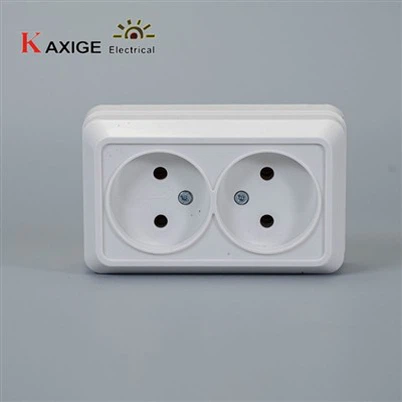How do I insulate a switch?
Leave a message
Insulating a switch is a crucial step in electrical work, ensuring both safety and optimal performance. As a supplier of sockets and switch electrical products, I've encountered numerous scenarios where proper insulation can make a significant difference. In this blog, I'll share some insights on how to insulate a switch effectively.
Understanding the Importance of Switch Insulation
Before delving into the insulation process, it's essential to understand why insulation is necessary. Electrical switches carry current, and without proper insulation, there's a risk of electric shock, short circuits, and even fires. Insulation materials act as a barrier, preventing the flow of electricity to unintended paths and protecting users and the electrical system.
Choosing the Right Insulation Materials
The first step in insulating a switch is selecting the appropriate insulation materials. There are several types of insulation materials available, each with its own properties and applications.
1. Electrical Tape
Electrical tape is a common and cost - effective insulation material. It's made of vinyl or rubber and comes in various colors. Electrical tape is easy to use and can be wrapped around the switch terminals to prevent exposed wires from coming into contact with other conductive materials. However, it may not be suitable for long - term or high - voltage applications as it can degrade over time.
2. Heat - Shrink Tubing
Heat - shrink tubing is another popular choice. It's made of a polymer material that shrinks when heated, creating a tight seal around the switch components. Heat - shrink tubing provides better insulation than electrical tape and is more durable. It can withstand higher temperatures and is resistant to moisture and chemicals. To use heat - shrink tubing, you simply slide it over the switch terminal, and then use a heat gun to shrink it in place.
3. Epoxy Resin
For more permanent and heavy - duty insulation, epoxy resin can be used. Epoxy resin is a two - part adhesive that hardens when mixed. It can be poured over the switch to encapsulate it completely, providing excellent electrical insulation and protection against environmental factors. However, working with epoxy resin requires careful preparation and mixing, and it may take some time to cure.
Insulating a Switch: Step - by - Step Guide
Now that we've discussed the insulation materials, let's go through the step - by - step process of insulating a switch.
Step 1: Safety First
Before starting any electrical work, always turn off the power supply to the switch at the circuit breaker. Use a voltage tester to ensure that there is no electricity flowing through the switch. Wear appropriate safety gear, such as insulated gloves and safety glasses.
Step 2: Prepare the Switch
Clean the switch thoroughly to remove any dirt, dust, or debris. This will ensure that the insulation material adheres properly. If there are any loose wires or damaged components, repair or replace them before proceeding.
Step 3: Insulate the Terminals
If you're using electrical tape, start by wrapping it around the switch terminals. Make sure to cover the exposed wires completely and overlap the tape slightly to create a secure seal. If using heat - shrink tubing, slide it over the terminal and use a heat gun to shrink it. Keep the heat gun moving to avoid overheating the tubing.
Step 4: Consider Additional Insulation
For added protection, you can use a switch cover or box. A switch cover can prevent accidental contact with the switch and provide an extra layer of insulation. Some switch covers are made of insulating materials such as plastic or fiberglass.
Special Considerations for Different Switch Types
Different types of switches may require different insulation methods. For example, a 73B 2 Gang Switch has multiple terminals, and each terminal needs to be insulated properly. When insulating a multi - gang switch, make sure to separate the terminals to prevent short circuits.


The 73B 2 Gang Switch with Lamp Indicator has additional components such as a lamp. When insulating this type of switch, pay special attention to the lamp connections to ensure that they are properly insulated and do not interfere with the switch operation.
For a 73B 1 Gang Socket Grounding, grounding is an important aspect of insulation. Make sure that the grounding wire is properly connected and insulated to prevent electrical hazards.
Maintenance and Inspection
Once the switch is insulated, it's important to perform regular maintenance and inspections. Check the insulation for signs of wear, damage, or degradation. If you notice any issues, such as cracked electrical tape or melted heat - shrink tubing, replace the insulation immediately.
Conclusion
Insulating a switch is a critical task that should not be overlooked. By choosing the right insulation materials and following the proper insulation process, you can ensure the safety and reliability of your electrical system. As a socket and switch electrical supplier, we offer a wide range of high - quality switches and insulation materials to meet your needs.
If you're interested in purchasing our products or have any questions about switch insulation, we encourage you to contact us for a procurement discussion. We're here to provide you with the best solutions for your electrical projects.
References
- "Electrical Wiring Handbook" by Mike Holt
- "Handbook of Electrical Insulating Materials" by R. J. J. Williams






